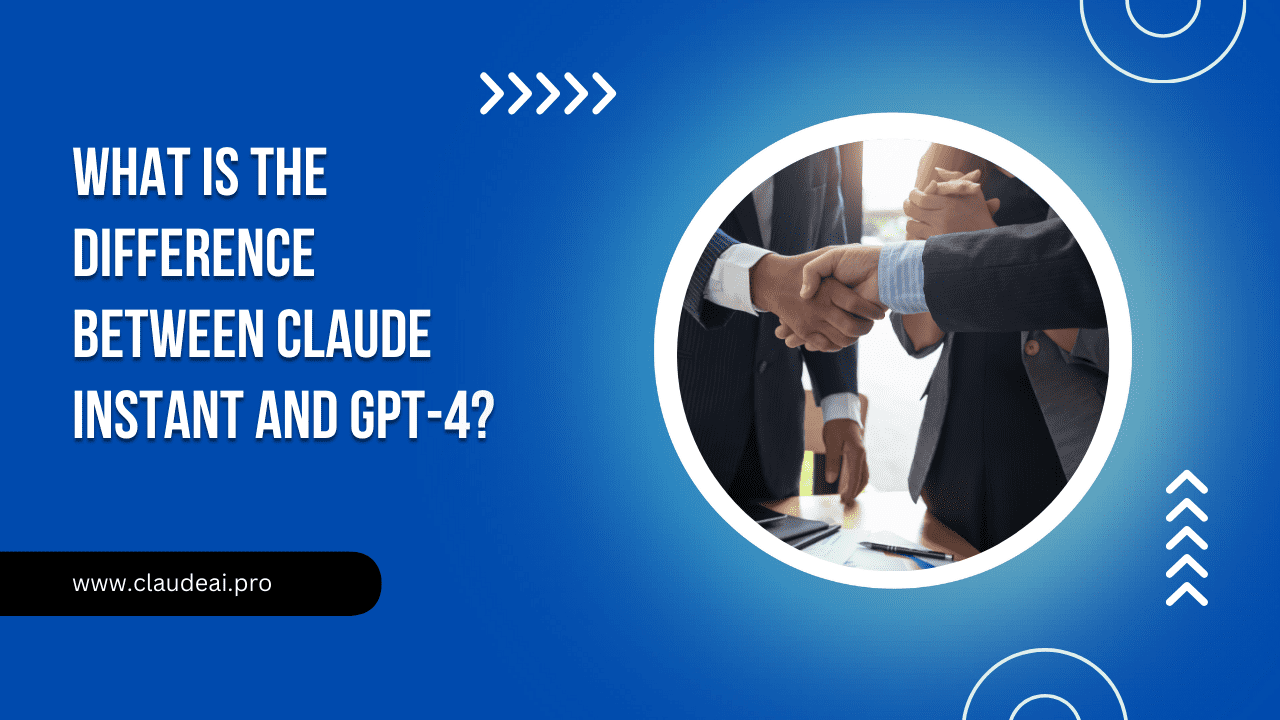Claude Instant and GPT-4 are two leading conversational AI models developed by Anthropic and Anthropic Research respectively. Both models are designed to have natural conversations, answer questions accurately, and help users with a variety of tasks.
However, there are some key differences between the two models in terms of their architecture, training data and techniques, capabilities, use cases, and performance. This article explores these differences in detail.
Architecture
CLAUDE Instant
- Based on Anthropic’s Constitutional AI approach focused on safety
- Smaller model size (4.1 billion parameters) compared to GPT models
- Uses retrieval augmented generation: accesses external knowledge source to find relevant information
GPT-4
- Latest model in OpenAI’s Generative Pretrained Transformer (GPT) series
- Massive model size (120 billion parameters)
- Purely generative model without retrieval abilities
- Trained using specialized supervised learning techniques
So while Claude taps into outside information to improve responses, GPT-4 relies entirely on patterns found in its training data. Claude’s smaller architecture helps ensure reasonable responses.
Training Data and Techniques
CLAUDE Instant
- Trained on much smaller cleaner dataset filtered for security, accuracy
- Uses constitutional AI framework while training
- Focused on safe, honest and helpful responses
GPT-4
- Trained on dataset likely including harmful content
- Bigger unfiltered dataset scraped from the internet
- Reinforcement learning from human feedback used
- Controls introduced later to improve safety
Anthropic specifically crafted Claude’s training process to align with human values. GPT-4’s training data and feedback-based learning could potentially lead hazardous responses without controls.
Capabilities
CLAUDE Instant
- Carries out helpful assistant tasks: scheduling, calculations, translations etc
- Answers naturally with retrieval augmented responses
- Accepts corrections and challenges regarding facts
- Credits sources appropriately in responses
GPT-4
- Diverse conversational and text/code generation abilities
- Creative writing like prose, poetry, lyrics and more
- Translations between languages
- Programming in various languages
So Claude focuses conversation capabilities for assistant roles, while GPT-4 has broader generative strength suiting wider applications – some potentially harmful. Claude acknowledges mistakes, while GPT-4’s imagination risks inaccurate or fictitious outputs if not controlled.
Use Cases
CLAUDE Instant
- AI assistant for productivity, academic help and daily tasks
- Help user by answering questions accurately with external sourcing
- Have focused valuable conversations through contextual responses
GPT-4
- General purpose AI model serving diverse functions
- Interactive fiction writing and programming support
- Chatbot offering entertainment and some assistance
- Can invent consistent worlds/characters as a storytelling tool
Given its accountability and knowledge sourcing, Claude is geared for tasks requiring accuracy. GPT-4’s generative nature helps creative writing and conversation, but has higher risks requiring monitoring and pattern corrections.
Performance
Accuracy and Factual Correctness
- Claude accesses knowledge sources, credits appropriately and avoids fiction
- GPT-4 generates new text so quality depends completely on training patterns
Consistency and Contextual Responses
- Claude maintains consistency both long-term and during conversations
- GPT-4 may lose context or contradict itself without strict controls
Appropriateness and Safety
- Claude optimized for appropriateness through Constitutional AI
- GPT-4 has higher risks of toxic outputs needing moderation
So Claude offers reliable focused assistance for daily tasks. GPT-4 is more inconsistent and unconstrained, with higher risks but greater creative potential through generations.
Conclusion
Claude Instant and GPT-4 represent two pioneering AI models – the former focused on helpful accurate conversation, while the latter has expansive generative abilities. Key differences in their architecture, data and techniques manifest in their capabilities, use cases and performance.
While Claude prioritizes safety and value alignment, GPT-4 trades these for broad functionality requiring more oversight. Both point towards an emerging spectrum for language AI spanning constrained assistance to unrestrained creation. Understanding their contrasting strengths is key to effectively leveraging such technologies while addressing the risks.
FAQs
What are Claude Instant and GPT-4?
Claude Instant is an AI assistant created by Anthropic to be helpful, harmless, and honest. GPT-4 is the latest generative pretrained transformer model from OpenAI with state-of-the-art conversational and text generation abilities.
Which model typically provides more accurate, factual responses?
Claude Instant, due to its external knowledge source and training focused on truthful outputs. GPT-4 often fabricates new text less reliably.
Which has better safety and appropriateness controls?
Claude Instant, thanks to Anthropic’s Constitutional AI training methodology providing greater value alignment and risk reduction.
